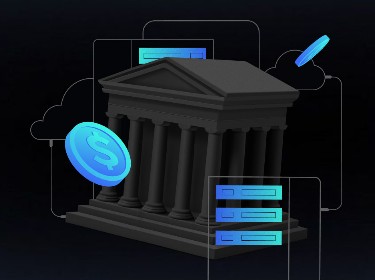Data discovery has become an integral and increasingly vital element in modern business workflows. But what exactly makes it so pivotal and irreplaceable?
Organizations across the globe are increasingly recognizing the potential within their data and are readying themselves to explore these untapped resources.
In this endeavor, data discovery is an indispensable instrument that affords businesses a fresh perspective and facilitates a deeper comprehension of their extensive data processes.
But how does data discovery work and what tools and practices do businesses need to know about to ensure that their data discovery process not only improves operational efficiency but also aids in strategic decision-making?
Read on to delve into the world of data discovery processes, tools, and best practices, and discover how transforming raw data into valuable insights can propel your business forward.
What is data discovery and why is it important?
Data discovery refers to the methodical examination of large data sets to identify patterns, trends, and actionable insights. The process entails aggregating data from diverse sources to extract significant information.
Through the data discovery process, companies gain insights that drive growth and highlight areas for improvement. Plus, data discovery aids in risk management by identifying potential issues early. The outcome is a more data-driven approach to business that boosts both competitiveness and operational efficiency.
Data discovery is highly valuable in sectors such as finance, healthcare, and retail, where deep insights into consumer patterns, market dynamics, and risk assessment are needed to thrive. Yet, it is equally impactful in manufacturing and logistics as it empowers these industries to enhance supply chain efficiency and streamline production operations by leveraging data-informed strategies.
Transform your enterprise's financial landscape with our custom software development solutions and specialized consulting services
Technologies and tools used in the data discovery process
The data discovery process involves a variety of tools and technologies so as to enhance the efficiency and accuracy of data analysis. These include business intelligence solutions, data mining tools, artificial intelligence and machine learning technologies, as well as data warehousing solutions.
Business intelligence tools
Data discovery extensively utilizes business intelligence platforms to enable the construction of detailed, interactive dashboards and in-depth reports.
BI tools consistently connect with multiple data sources, ranging from cloud storage to in-house databases, and provide seamless data integration and accessibility. Moreover, these platforms often feature capabilities such as real-time data analytics and customizable widgets.
All these functionalities assist users in identifying specific trends and anomalies within their data, thereby delivering precise, actionable insights for strategic decision-making.
Advance your enterprise's strategic capabilities with our sophisticated business intelligence solutions
Data mining
Data mining tools are also an important element of the data discovery process. They employ sophisticated algorithms to identify patterns and relationships within extensive datasets and assist businesses in extracting valuable insights that are essential for understanding complex data structures.
On top of this, data mining tools enhance predictive analytics efforts and equip companies with the capability to forecast future trends through the analysis of historical data.
Artificial intelligence and machine learning
In data discovery, ML and AI development services and solutions are employed in many different ways, for example:
- Supervised ML algorithms model historical data trends, which helps reveal new insights
- ML’s unsupervised learning uncovers hidden patterns by clustering and segmenting data
- Natural language processing in AI extracts structured data from unstructured text, which is needed for thorough data discovery
- Deep learning in ML identifies complex patterns for more advanced data discovery
- AI-enhanced data cleansing tools maintain data accuracy for reliable discovery
Check out our machine learning consulting company's services and learn how our experts can assist in elevating your project
Data warehousing solutions
Data warehouses facilitate data discovery through the aggregation and harmonization of data from various sources. They allow analysts to execute complex, cross-system queries to uncover patterns and relationships in different business areas.
What’s more, data warehouses help maintain data consistency and quality, which are crucial aspects for precise analytics and informed decision-making.
How to discover data in 5 steps?
![]()
The data discovery process is a demanding one that requires meticulous attention and expert finesse.
Our big data and data science services company identifies five key steps, including defining objectives, gathering data, cleaning and organizing data, analyzing data, and interpreting the results.
Step 1. Define your business objectives
The process begins with setting clear goals that provide direction and focus for the data discovery efforts.
This step also helps guarantee that the subsequent data analysis fully complies with the specific needs and challenges of the business.
Step 2. Gather data
Then you should proceed with collecting data from a variety of sources, both internal and external in order to assure a wide-ranging scrutiny.
Remember that it is mandatory to gather a diverse range of data to gain a holistic view of the business landscape.
Step 3. Clean and organize the data
Here, the emphasis is on removing inaccuracies and inconsistencies from the data to ensure its reliability.
Properly organized data facilitates more efficient and accurate analysis and leads to more reliable insights.
Step 4. Analyze the data
In this stage, the concealed value and potential of data begin to emerge. The emphasis is on utilizing sophisticated analytical tools to comb through the data and identify patterns and insights that may not be immediately apparent.
Step 5. Interpret the results
The final step in the data discovery process is paramount for translating analysis into practical outcomes. It involves two key actions:
- Making informed decisions based on the performed analysis
- Aligning these insights with the business’s strategic objectives
Get in touch with our big data experts and unlock the full potential of your data-driven projects
What are the best data discovery practices?
![]()
Data discovery best practices are needed for extracting maximum value from data analysis.
Let’s take a look at some of the most important and efficient ones.
Provision of high-quality data
Quality data serves as the foundation of effective analysis. Thus, prioritizing the accuracy, completeness, and dependability of data is essential, as these elements directly influence the validity of the insights derived.
Appropriate tool selection
Selecting data discovery tools must be in harmony with the unique requirements of the business. The key considerations include the tool’s functionality, user-friendliness, and its compatibility with current systems.
Cross-functional collaboration promotion
When different departments like IT, data science, and business units work together, the quality and relevance of insights improve. This joint strategy harnesses the strengths of diverse skill sets, yielding more thorough and practical interpretations of data.
Robust data governance implementation
A comprehensive data governance framework is imperative to guarantee ethical usage, adherence to compliance standards, and robust security, thus providing effective protection and diligent management of data.
Iterative approach adoption
Treating data discovery as an enduring and adjustable process facilitates the continuous refinement of techniques and secures alignment with new data and insights, thereby sustaining its relevance.
Get insights into storytelling with data visualization and see what makes it so important
What are the top data discovery tools?
To discover data, your business will have to resort to a specialized data discovery tool.
Currently, the market offers a diverse range of such solutions, with notable examples including Tableau, Power BI, IBM Cognos Analytics, Domo, Looker, and Qlik.
Let’s examine each of these data discovery tools in greater detail.
Tableau
Tableau supports data exploration with a data engine capable of handling complex queries and large datasets. Its users interact with data through real-time analysis and dynamic visualizations.
Importantly, Tableau’s intuitive user interface enables efficient data discovery and allows for the creation of detailed dashboards and reports.
Microsoft Power BI
Power BI amalgamates data from a variety of sources, including cloud services like Microsoft Azure, and harnesses the power of DAX (Data Analysis Expressions) to facilitate advanced data modeling.
The platform’s strength lies in its interactive visualization features, which significantly elevate the data discovery experience and render it versatile for myriad business scenarios.
IBM Cognos Analytics
IBM Cognos Analytics is tailored for enterprise-level data exploration and offers a suite of tools for analyzing complex datasets.
The IBM Cognos Analytics platform includes functionalities for deep data analysis, extensive reporting, and interactive dashboards. It caters to organizations requiring detailed and comprehensive data discovery capabilities.
Domo
The Domo cloud-based platform enables users to analyze data from different systems and applications. Its focus is on providing a unified view of business data and aiding in the discovery of actionable insights.
Looker
Looker utilizes SQL-based data modeling for data discovery. This platform allows users to define data relationships and transformations and provides a deeper understanding of data.
Noteworthy is that Looker integrates with the Google Cloud Platform, offering scalable data exploration capabilities.
Qlik
Qlik’s associative data model enables the dynamic linkage of data across multiple sources for comprehensive exploration.
Its users stand to benefit from in-memory processing, which allows for fast data retrieval and analysis and contributes to an interactive user experience.
Delve into our detailed overview of the top 10 business intelligence platforms to look out for in 2025 and beyond
Closing thoughts
Data discovery is vital for organizations intent on unlocking the complete value of their data assets.
For businesses prepared to integrate the data discovery process in their workflows, we recommend exploring our specialized data analytics services.
Our offerings include:
- IT consulting services
- Implementation of data analytics
- Data visualization consulting services
- Data augmentation
- System integration
- Architecture migration
- Tailored solutions to enhance data-driven strategies
Get in touch with us now and let’s turn your data into actionable insights that will drive your business to success.




